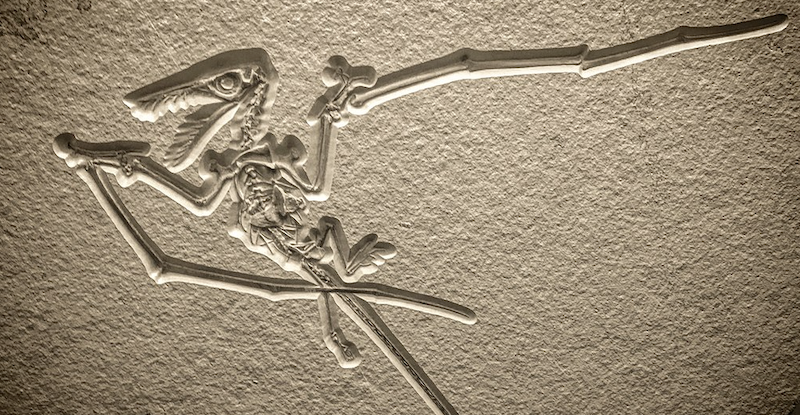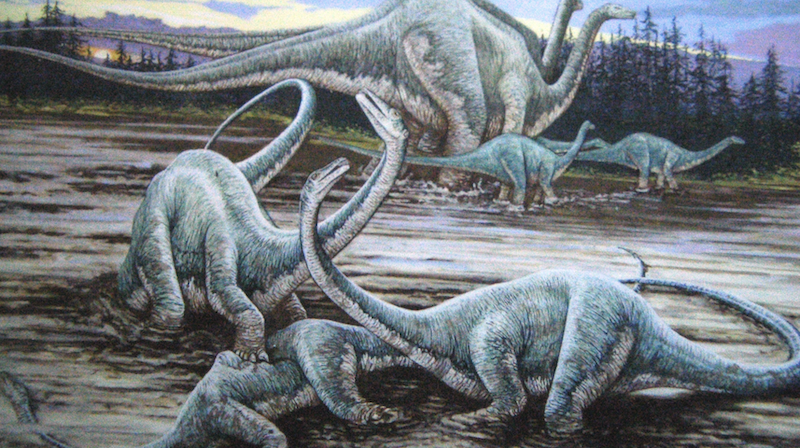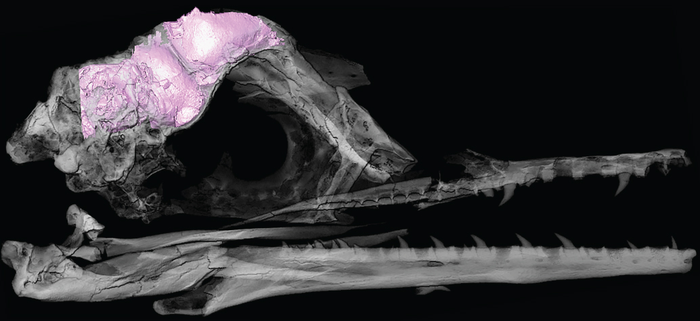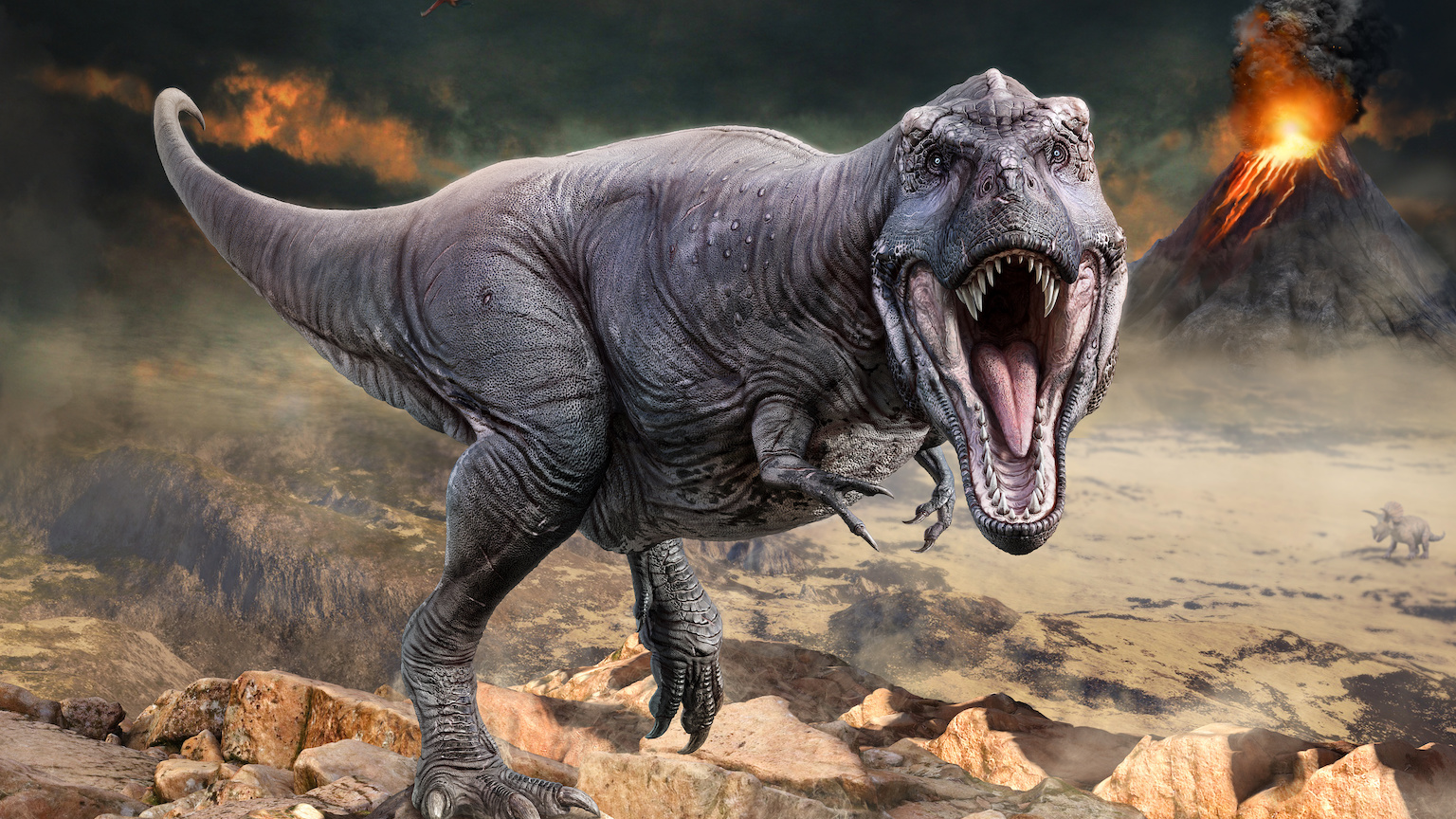How a cold climate ushered in the reign of the dinosaurs
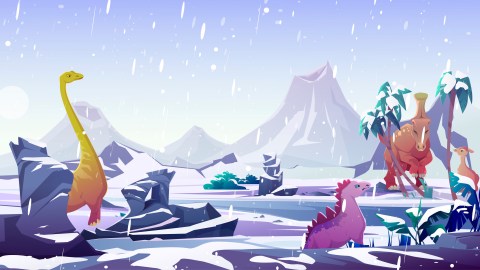
- More than 200 million years ago, a series of volcanic eruptions caused one of Earth’s five mass extinction events.
- For decades, scientists have debated why early dinosaurs survived this cataclysm while many other groups perished. New research now suggests that dinosaurs lived in cold conditions before the extinction event.
- Researchers propose that the cold-adapted dinosaurs could deal with the harsh volcanic winters while the rest of terrestrial life suffered. These theories could explain how dinosaurs were perfectly adapted to take advantage of a changed ecology and begin their long reign.
We’ve all heard the story of the asteroid that wiped out the dinosaurs. But how did a massive extinction event tens of millions of years earlier help propel them to the top of the ecological ladder?
At the end of the Triassic period, 201 million years ago, Earth suffered one of its greatest and gravest extinction events. The culprit? A series of massive volcanic eruptions. Some of these eruptions might have lasted entire decades, producing volcanic flows that were thousands of cubic kilometers in volume. These eruptions launched tons of ash and sulfur into the sky, blocking the sun and causing temperatures to plummet.
Until this sudden change in climate, the Earth was a veritable greenhouse. With CO2 concentrations between 1,000 and 6,000 parts per million (concentrations up to 15 times greater than modern-day levels), the late Triassic is one of the only periods in Earth’s history for which we have no evidence of polar ice sheets.
Species adapted to life in sauna-like conditions did not react well to the sudden winter. Roughly one-third of terrestrial species went extinct, and nearly all marine life perished.
Early dinosaurs were among the few surviving groups. For years, researchers wondered how the dinosaurs managed to survive and even thrive during this turbulent era. In a recent paper published in the journal Science Advances, researchers argue that the Triassic dinosaurs lived in cold environments before the eruptions. They were thus well-adapted to handle the harsh winters, unlike most life on Earth. This gave the dinosaurs an enormous advantage throughout and following the mass extinction, allowing them to reign on Earth for 135 million years.
Polar dinosaurs
Scientists think that dinosaurs appeared in southerly latitudes around 231 million years ago. At this time, all of Earth’s landmass was connected as the giant supercontinent Pangea.
In their early days, dinosaurs were not the super-powered megafauna we think of now, dominating the landscape wherever they went. Instead, they kept to themselves in the polar latitudes. Although most of Earth was intensely warm due to high concentrations of greenhouse gases, the higher latitudes received little to no sunlight during much of the year. The dinosaurs that dwelled in the far north must have lived in relatively cold climates.
Though the existence of dinosaurs at the poles has been discussed for decades, we have never collected definitive evidence that they inhabited these areas during prolonged periods of freezing temperatures. To prove that dinosaur life coincided with cold conditions, the researchers, led by Columbia University’s Paul Olsen, examined ancient lake bottoms in China’s Junggar Basin. These lakes formed 206 million years ago, when the basin sat well above the Arctic Circle.
Along with the normal sediment, the researchers found large pebbles in the middle of the lakes. They concluded that the only way these pebbles could have wound up so far from the shoreline was by hitching a ride on an ice raft.
In the Junggar Basin lakes, the waters must have frozen along pebble-strewn shorelines. Thawing lakes caused chunks of ice to float off, carrying pebbles that they dropped throughout the lake. This evidence suggests that at least four million years before the eruptions, the area froze and thawed regularly. The researchers also found dinosaur footprints near the shores, meaning they lived in the area during these periods of cold.
When the series of massive eruptions began, greenhouse gases spiked. The first effects were deadly temperature increases and acidifying ocean waters — effects so strong that almost all life died. But once volcanic sulfur aerosols reached the atmosphere, the greenhouse gas concentrations were no match for near-perpetual darkness. Temperatures began to plummet, and most of the remaining life on Earth — dominated by other reptiles like crocodilians, as well as some mammals — started to freak out. The dinosaurs, accustomed to the cold, shrugged it off as a particularly long winter. What allowed them to survive?
Sweater weather
You do not need insulation when you live in the balmy conditions of the Triassic. However, dinosaurs at the poles had to have some insulation to help them get through the dark winters. The researchers suggest that the “proto-feathers” we find in many later clades of dinosaurs were likely primitive to all dinosaurs, including the early Triassic dinosaurs. Because these proto-feathers evolved in animals that could not fly, the authors argue they must have been used for thermal insulation. If these theories are correct, dinosaurs already wore warm winter coats of proto-plumage before the end-Triassic extinction. Recent research also shows that many dinosaurs were warm-blooded and had a high metabolism, traits crucial for surviving harsh winters.
Some of the other survivors of the extinction event included small-bodied pseudosuchians, a group that includes today’s living crocodilians. Though these reptiles lacked insulation, the smaller, surviving species could burrow underground, just as today’s turtles do when they meet with colder weather. The fact that these smaller animals are the ones that survived further supports the idea that the cold temperatures prompted by volcanic winters caused the mass extinction at the end of the Triassic.
Ushering in a new era
With their proto-plumage and their ability to withstand the cold, the dinosaurs suddenly became the big kids on the block, with the formerly dominant pseudosuchians dying off. They were able to establish ecological dominance as potentially hundreds of years of periodic volcanic winters unfolded. This positioned the dinosaurs to rule the land until another mass extinction wiped most of them out nearly 135 million years later.
The theory still needs to be substantiated in the fossil record. We need to find definitive evidence that Triassic dinosaurs had a proto-feather coat that allowed them to deal with a changing climate. Still, the footprints near ice-drifted pebbles make one thing clear: Dinosaurs did not just live in the warm, balmy conditions we see in images or movies. Considering the success of Jurassic Park: Dominion, Steven Spielberg should consider creating a feel-good, Christmas installment of the franchise.
